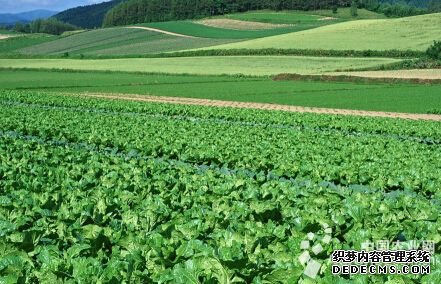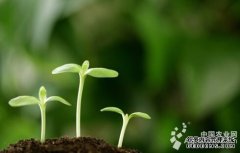Vegetables become the second largest crop in Guangxi (Picture)

The latest figures from the Guangxi Department of Agriculture show that at present, the planting area of vegetables in Guangxi has reached 1.016 million hectares, exceeding 1 million hectares for the first time, making it the second largest crop after rice. Guangxi is rich in light, temperature, soil and water resources, which is known as "natural greenhouse".
The latest figures from the Guangxi Department of Agriculture show that at present, the planting area of vegetables in Guangxi has reached 1.016 million hectares, exceeding 1 million hectares for the first time, making it the second largest crop after rice.
Guangxi is rich in light, temperature, soil and water resources, which is known as "natural greenhouse". There are many varieties of vegetables in the autonomous region, which can be planted and harvested all the year round, and generally do not need special cold protection and heat preservation measures in winter, the production cost is quite low, and has a very obvious advantage in natural conditions and market competition.
Based on this advantage, the vegetable industry in Guangxi has developed rapidly since the late 1990s, with the planting area increasing from 610000 hectares in 1996 to 816000 hectares in 1999. In the case of severe freezing losses at the end of last year, the per capita vegetable output value of farmers in Guangxi still reached 225 yuan, and the per capita net income was 151 yuan, accounting for 7.4% of the per capita net income in that year.
After years of efforts, Guangxi has become an important base for transporting vegetables from the south to the north in China. Baise, Yulin, Hezhou and other cities have established relatively perfect socialized service systems for the vegetable industry, and the vegetable product processing industry has also begun to take shape. At present, only in 19 "winter vegetable development demonstration counties", there are 161 processing plants and more than 30, 000 processing workshops, with an annual processing capacity of nearly 1.4 million tons.
This year, Guangxi has made great efforts to adjust its agricultural structure and substantially reduce the planting area of traditional grain, sugarcane and other crops. The planting area of grain and sugarcane decreased by 2.1% and 8.3% respectively compared with the same period last year. Governments at all levels actively guide farmers to use the cultivated land to develop the production of famous, special and high-quality vegetables. The reality of increasing production and income over the past few years has stimulated the enthusiasm of farmers in Guangxi to grow vegetables. this year, the vegetable planting area of the autonomous region has increased by another 200000 hectares over the previous year. At present, the scale of vegetable cultivation has accounted for 15.8% of the total crop area in Guangxi, second only to rice and ranking second among crops.
- Prev

Beijing: do a good job in industry management and promote the development of seed industry (photo)
In order to strengthen the collection, analysis and utilization of basic information of seed industry, strengthen the qualification verification of crop seed production and operation license in Beijing, standardize administrative licensing standards and procedures, and further improve the level of statistics and administrative licensing of seed industry in our city, Beijing seed
- Next

Zhangye Shandan County Quality Guarantee Promotion Seed Potato Promoting Potato Industry Development
Shandan County is a large potato planting county in Hexi area of our province. There are 5 potato seed potato enterprises in the whole county, among which 2 provincial-level certificate enterprises are Gansu Tianrun Potato Industry Co., Ltd., which undertake the task of potato basic seed potato breeding and original seed production, and are also the original seed supplement.
Related
- A one-day flower show brings 130 million yuan in orders! Nanhai, this Phalaenopsis exhibition is amazing
- What do the flower language and meaning of Lutheran tree mean? Precautions for planting Lutheran tree
- Encounter Chaoshan Kongfu tea, not without this cup of Phoenix single clump
- The durian market in Vietnam and Thailand is flooded. The price of imported durian has plummeted by 30-40% in a month.
- Shanghai solved the problem of local vegetable supply by planting 80,000 mu of green leafy vegetables.
- Wageningen University has become the best agricultural university in the world for the seventh time in a row.
- The strongest export season of South African grapes is full of challenges, with exports to Russia falling sharply by 21%.
- Sri Lanka is on the verge of bankruptcy, "Tea for debt" Organic Agriculture Revolution aggravates the Food crisis?
- Turning waste into earthworm manure and worm manure into organic fertilizer-A new choice for auxiliary farming
- Organic rice growers shoulder the responsibility of nurturing agricultural talents! Yinchuan Sustainable Farm with Organic Life Camp

